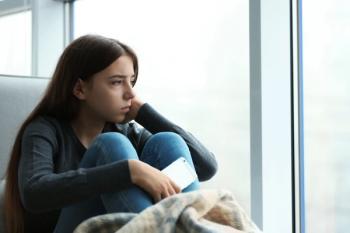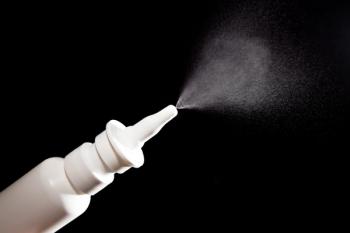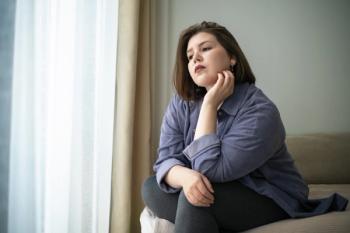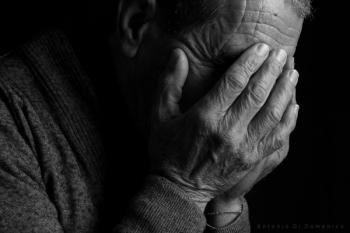
A Clinician’s Brief Guide to Chronotherapy for Affective Disorders
Chronotherapy presents a unique tool to add to the armamentarium of available modalities for management of non-seasonal depression. Clinicians should be familiar with its application and be able to implement it in recalcitrant sufferers.
RESEARCH UPDATE
Affective disorders represent a highly prevalent subset of clinical conditions that increase morbidity and mortality of many co-occurring illnesses.1 The currently available primary treatments and augmentation strategies for refractory depression have their limits in terms of both efficacy and adverse effect profile.2
Chronotherapeutical modalities, such as bright light therapy (BLT), have traditionally been accepted for depression with seasonal features.3 Our recent meta-analysis suggests there is ample evidence that BLT can be utilized as an augmentation strategy in those with non-seasonal depression as well.4 The treatment can hasten and potentiate the antidepressant response with “effect sizes equivalent to those in most antidepressant pharmacotherapy trials.”5 Despite the acknowledgment of circadian rhythm misalignment in patients with depression, there has been little penetration of BLT use in clinical practice. This article is meant to serve as a brief introduction on how to implement this important tool into your clinical practice.
CASE VIGNETTE
“B.A.” was a 53-year-old white female with a history of major depressive disorder (MDD), recurrent and alcohol use disorder in remission. She had been adherent to her psychotropic regimen comprising of imipramine 125 mg at bedtime prior to a recent decompensation of depressive symptoms. Predominant symptoms included increasing irritability, avolition, and diminished work performance, in addition to difficulty getting to sleep. The patient indicated she purchased a lightbox from an online retailer and intended to use it to manage her mood symptoms. She was instructed on appropriate treatment parameters including morning timing. Within weeks of use, she began to notice benefits. It became easier to rise in the morning and she had not taken personal mental health days off from work.
Chronotherapy
Retinal photoreceoptors serve as messengers to the suprachiasmatic nucleus (SCN) to regulate the 24-hour circadian rhythm through its influence on melatonin secretion of the pineal gland. Melatonin is synthesized from its precursor, serotonin, and as melatonin starts to rise, sleep is induced typically 2 to 3 hours after melatonin onset (MO). Plasma melatonin levels are thus high at night and low during the day with a peak around ~2 AM to 4AM. Individual differences in timing of MO creates differences in circadian timing.
Administering light in the early morning leads to “phase advances” (secretion of melatonin will be pushed to occur earlier in the evening), whereas afternoon light administration creates a “phase delay” (melatonin secretion occurs later in the evening). Individuals that have MO that occurs later in the evening tend to exhibit greater novelty seeking, lower impulse control and self-regulation, and poorer health in general. There is also an association between this later MO and depression that parallels severity.
Interventions into circadian disruptions are often helpful in the management of depression.6 As such, morning light can cause phase restoration through advancement, and hence improvement in mood.7 Knowing the exact timing that melatonin secretion occurs for a patient is crucial in guiding the timing of early morning light administration.
Meta-analyses
Here, an analysis of 10 RCTs suggests BLT, administered at 5000+ lux, for periods of 30 minutes, may augment the efficacy of antidepressant pharmacotherapy in the treatment of MDD and bipolar depression without seasonal effects.4 Included studies were all randomized trials of BLT augmentation in patients with nonseasonal depression, uncomplicated by any other comorbidities. Across the studies that met inclusion criteria, BLT had a positive and significant effect g = 0.545, p < .001, 95% CI 0.385-0.732. Variance of the effect sizes was not significantly different from zero, Ï2 = 0.00, 90% CI 0.00-0.170, and there was no significant heterogeneity in effect sizes, Q(9) = 6.54, p = 0.685.
A more recent
Patient selection and workup
For a circadian rhythm assessment, the pineal MO should be determined. Although the standard for assessment is by salivary sampling over several hours before habitual sleep onset, this is impractical for clinical use. The Morningness Eveningness Questionnaire (MEQ),9 a self-administered questionnaire can be just as accurate. The 19-item MEQ produces scores in the 16 to 84 range which corresponds to a melatonin-onset range of 6 PM to 12 AM (the higher the score, the earlier the onset). This provides guidance on the optimum time to administer early morning light therapy in order to promote circadian rhythm phase advances (~8.5 hours after the individual’s specific MO).10
A sleep phase assessment should also be performed using a standard sleep log.11 A discussion of the variability of the sleep onset time, nighttime interruptions, duration, wake-up time, and any daytime napping should take place at the initial evaluation. Education on sleep hygiene and a discussion of any social variants that might impact BLT scheduling is also recommended.
Importantly, certain medications can be photosensitizing hence the use of BLT may be somewhat contraindicated. These include neuroleptics, sulfonamides, tetracycline, tricyclic antidepressants, St John’s Wort, and porphyrin drugs, among others.
Selecting and using a lightbox
In selecting a lightbox, patients should be advised in picking one with at least 5000 lux and installing in a room where they can see themselves spending 30 minutes every morning.
When using the lightbox, the screen must be tilted forward to create a 30-degree downward angle. The position of the patient’s eyes during use should be approximately 12 inches from the screen when the head is erect.
Without looking directly at the screen, the patient should focus downward (eg, reading). The seat (or box) should be adjusted such that the eye level is one-third to one-half up the screen when looking straightforward with the head position erect.12(pp332-344) The exact time of the session should be guided by the MEQ and of at least 30 minutes in duration.
Monitoring parameters
BLT has an accelerated response compared to the onset of antidepressants, hence assessments must be done in the week or two after starting pharmacotherapy. Typical onset of improvement is three to seven days. One aspect to assess for is awakening that occurs > 30 minutes before the scheduled therapy as this could represent too large of a phase advance and can lead to increased sleep debt, or a bipolar switch. This should be of concern even if mood is improving.10 Patients receiving BLT augmentation should be assessed regularly for improvement using a validated, objective, tool such as the Hamilton Depression Rating Scale (HAMD) or Quick Inventory of Depressive Symptomatology (QIDS). Scores should be tracked throughout the treatment duration with a baseline measure to be obtained prior to treatment initiation. A daily sleep log should also supplement, noting the exact timing of BLT treatments.
Clinical bottom line
Many patients suffering with depressive disorders fail to respond to standard antidepressant pharmacotherapy, psychotherapy alone, or in combination. Augmentation strategies improve outcome in many cases but treatment resistance remains common leaving many with disabling symptoms or distressing residual symptoms. The adoption of BLT for treatment of non-seasonal depression remains quite limited by psychiatric clinicians despite
Our meta-analysis suggests BLT holds promise as an addition to the armamentarium of interventions available for refractory depression.4 There is much more to BLT than discussed here; however, this paper serves as a very brief guide to introduce clinicians to this modality and to allow them to ensure appropriate utilization.
Disclosures:
Dr Stanciu is an Assistant Professor of Psychiatry at Dartmouth’s Geisel School of Medicine and Director of Addiction Services at New Hampshire Hospital, Concord, NH. Dr Brooks is a PGY-4 Psychiatry Resident at East Carolina University’s Brody School of Medicine, Greenville, NC. The authors report no conflicts of interest concerning the subject matter of this article.
References:
1. Kessler RC, Berglund P, Demler O, et al. Lifetime prevalence and age-of-onset distributions of DSM-IV disorders in the National Comorbidity Survey Replication. Arch Gen Psychiatry. 2005;62:593–602.
2. Gaynes BN, Warden D, Trivedi MH, et al. What did STAR*D teach us? results from a large-scale, practical, clinical trial for patients with depression. Psychiatr Serv. 2009;60:1439–1445.
3. Kasper S, Rogers SLB, Yancey A, et al. Phototherapy in individuals with and without subsyndromal seasonal affective disorder. Arch Gen Psychiatry. 1989;46:837–844.
4. Penders TM, Stanciu CN, Schoemann AM, et al. Bright Light Therapy as Augmentation of Pharmacotherapy for Treatment of Depression: A Systematic Review and Meta-Analysis. Prim Care Companion CNS Disord. 2016;18(5).
5. Golden RN, Gaynes BN, Ekstrom RD, et al. The efficacy of light therapy in the treatment of mood disorders: a review and meta-analysis of the evidence. Am J Psychiatry. 2005;162:656–662.
6. Au J, Reece J. The Relationship between chronotype and depressive symptoms: a meta-analysis. J Affect Dis. 2017;218:93-104.
7. 11. Wirz-Justice A, Benedetti F, Terman M. Chronotherapeutics for Affective Disorders: A Clinician's Manual for Light and Wake Therapy. 1st Edition. Basel, Switzerland: Karger Publishers; 2009.
8. Lam RW, Teng MY, Jung YE, et al. Light Therapy for Patients With Bipolar Depression: Systematic Review and Meta-Analysis of Randomized Controlled Trials. Can J Psychiatry. 2019 Dec 12:706743719892471.[Epub ahead of print].
9. Horne JA and Ãstberg O. (1976) A self-assessment questionnaire to determine morningness-eveningness in human circadian rhythms. Int J Chronobiol. 1976;4:97-100.
10. Terman M, Terman JS. Light therapy for seasonal and nonseasonal depression: efficacy, protocol, safety, and side effects. CNS Spectrums. 2005;10:647-663.
11. Wirz-Justice A, Benedetti F, Terman M. Chronotherapeutics for Affective Disorders: A Clinician's Manual for Light and Wake Therapy. 2nd Edition. Basel, Switzerland: Karger Publishers; 2013.
12. Terman M, Terman JS. Chronotherapeutics: Light therapy, wake therapy, and melatonin. In: Mann JJ, Roose SP, McGrath PJ, eds. Clinical Handbook for the Management of Mood Disorders. Cambridge: Cambridge University Press; 2013.
13. American Psychiatric Association. Practice Guideline for the Treatment of Patients with Major Depressive Disorder. 3rd Edition. American Washington DC: Psychiatric Association; 2010.
Newsletter
Receive trusted psychiatric news, expert analysis, and clinical insights — subscribe today to support your practice and your patients.














